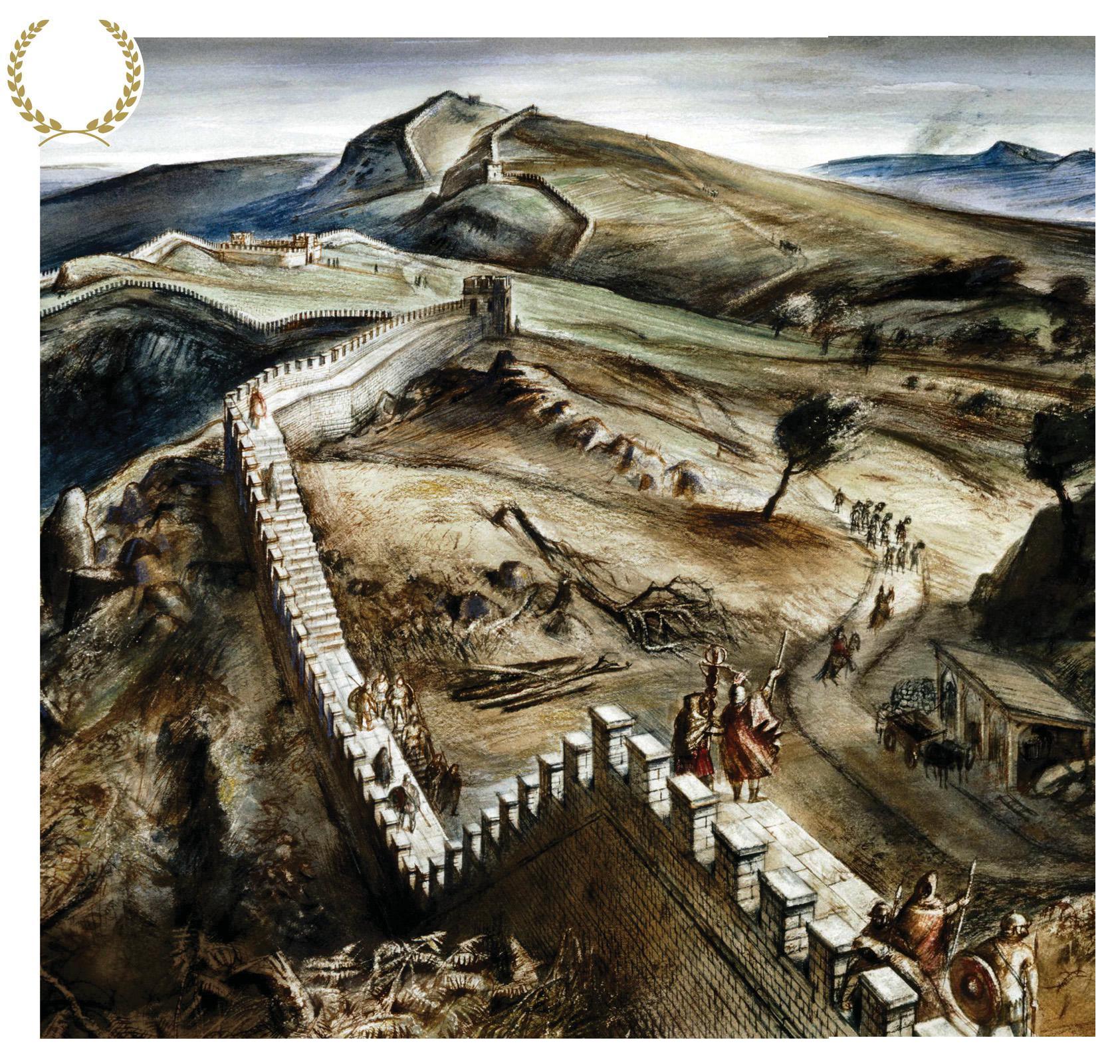
On a June day in 2003, metal detectorists in the north Staffordshire village of Ilam unearthed a curious object. The second-century AD trulla – a small saucepan – is made of a copper alloy, inlaid with colourful, slightly psychedelic enamel whirls. What makes the artefact, now known as the Staffordshire Moorlands Pan (or Ilam Pan), special, though, is the Latin inscription running around its rim: MAIS COGGABATA VXELODVNVM CAMMOGLANNA RIGORE VALI AELI DRACONIS.
What does it mean? Well, the first four words are names of Roman forts in Cumbria: Mais (at Bowness-on-Solway), Coggabata (Drumburgh), Uxelodunum (Stanwix) and Cammoglanna (Castlesteads). The second part of the inscription – RIGORE VALI AELI DRACONIS – can be translated as: “Along the line of Hadrian’s Wall, [this is the cup of] Draco.” If that interpretation is correct, then this is a vessel commissioned by Draco to commemorate his time at these forts – in other words, a souvenir of Hadrian’s Wall. And it’s not the only one – other pans found elsewhere in Britain and France also reference forts on the wall. So how did a Roman military monument come to inspire such keepsakes?
Desirable souvenirs
The construction of Hadrian’s Wall was unprecedented. It was – and in many ways remains – a unique creation. Once completed, the wall was garrisoned for nearly 300 years, during which time tens of thousands of Roman soldiers served along the monument.
This story is from the August 2022 edition of BBC History UK.
Start your 7-day Magzter GOLD free trial to access thousands of curated premium stories, and 8,500+ magazines and newspapers.
Already a subscriber ? Sign In
This story is from the August 2022 edition of BBC History UK.
Start your 7-day Magzter GOLD free trial to access thousands of curated premium stories, and 8,500+ magazines and newspapers.
Already a subscriber? Sign In

The Aztecs at war
RHIANNON DAVIES discovers why war was so important to the Mesoamerican people - and why they believed a badly cooked meal could prevent a soldier from shooting straight

Towering achievement
NATHEN AMIN explores a 13th-century stronghold that was built to subdue independent-minded Welsh people, yet has since become a symbol of courage in the face of overwhelming odds

Eighteenth-century mushroom ketchup
ELEANOR BARNETT shares her instructions for making a flavourful sauce with roots in south-east Asia

Goodbye to the gilded age
JOHN JACOB WOOLF is won over by an exploration of the Edwardian era, which looks beyond the golden-era cliché to find a nation beset by a sense of unease

The power of the few
Subhadra Das's first book catches two particular waves in current publishing.
The 'badass' icon
One of the problems with biography, if an author is not careful, is that it can quickly become hagiography.

Ghosts of Germany's past
KATJA HOYER is impressed by a study of a nation's attempts to grapple with the crimes it perpetrated during the Second World War

A window onto England's soul
SARAH FOOT has high praise for a book that traces the evolution of English Christianity over the course of 1400 years, through the lives of its greatest thinkers

"There was a general perception that Queen Victoria's mourning was neither normal nor acceptable”
JUDITH FLANDERS talks to Rebecca Franks about her new book, which delves into the customs surrounding dying, death and mourning in Victorian Britain

"Indigenous children were forcibly separated from their families"
HIDDEN HISTORIES... KAVITA PURI on the legacy of Canada's residential schools